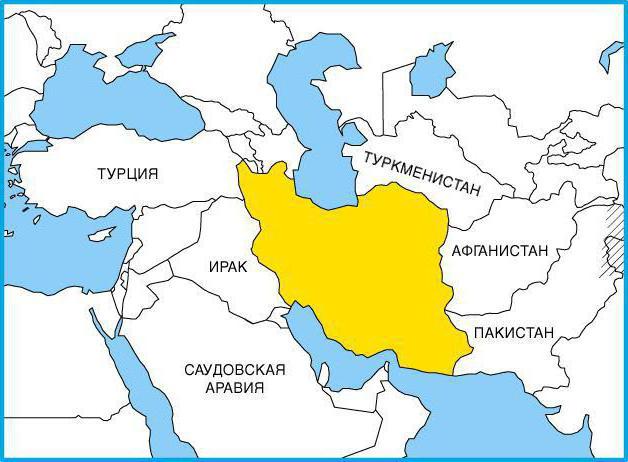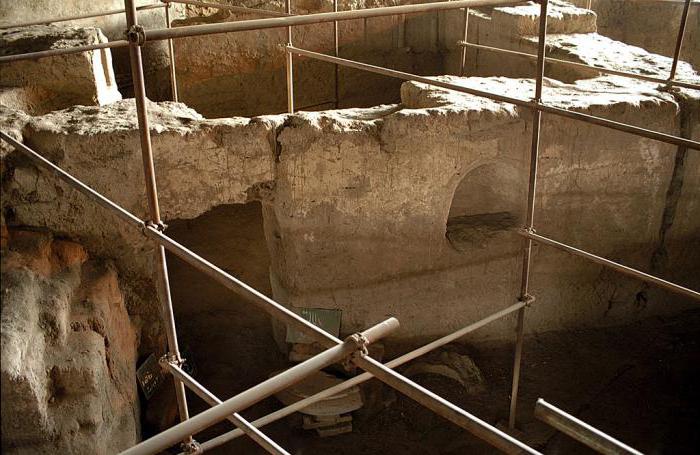The kingdom of Media, once formed from a tribal union, occupies a prominent place in the political, cultural and economic history of antiquity. This is one of the states where Zoroastrianism and the teachings directly related to it are widespread. It existed in the period from 670 BC. e. 550 BC e., but during its heyday extended much wider than conditional ethnic borders.
Geographic location
The once large ancient Eastern state, called the Medes, is now located in the West ethnographic region, which is owned by Iran. On the map of the Ancient World, it covered an impressive territory, which in the north was limited by the Araks and Elbrus rivers, and in the West by the jails of the largest modern mountain range Zagros. The southern part of the state of the Medes was bounded by the Caspian Sea. To the east of the territory stretched the solonchak desert Deshte Kevir, now the central part of Iran.
The emergence of the state
The first mention of the Medes is found in the Assyrian annals of the second half of the 9th century. BC e. In his writings, Herodotus calls the tribes inhabiting Medes, Aryans. Apparently, this was their self-name. The scripture of this ancient state refers to the "Land of the Aryans."
When exactly the Iranian tribes from Central Asia entered the territory of modern Iran is unknown. Most historians are inclined to believe that this happened around 2000-1500 BC. e. It is likely that initially the tribal union was formed from indigenous tribes belonging to the given area. However, already in the 9-8 centuries. BC e. changes begin to occur. They were associated with the advent of new tribes. The state of Midia during this period is characterized by the strengthening of the Iranian-speaking element, which subsequently became predominant.

From the 8th century BC e. the first small associations begin to appear on the territory of the future power. These are peculiar state regions, among which the most significant is Mana. It was it that later became the economic and cultural center of Media. Thus, at some point in the same territory there were tribal unions and state-regions. If you believe the records of Herodotus, then the person who united them, that is, the founder of the state of Medes is Deioc.
Dayok (Daiukku)
Initially, Deyok served as a judge, and from about 670 to 647 years. BC e. was the first king of Media. According to the testimonies left by Herodotus, he had great authority among his fellow tribesmen, was distinguished by justice and, guided by it, resolved disputes on a variety of issues, while complete lawlessness reigned throughout the country. It is for this reason that he was elected judge. All Medes knew about these qualities of Deioca, so after the next meeting he was elected king. The first thing the ruler did was to bring together six tribes: magicians, beads, strokhatov, arizatn, budiev and paretaken. At his direction, the ancient state found its capital in the form of the newly built city of Ekbatan.
The subsequent kings of Media
About the periods of the reign of the kings of Medes, the ancient authors give a number of conflicting information. For a long time, the chronology was built on the writings of Herodotus, considered the most reliable sources.
- Fravartish, or Fraort (circa 647-625 BC) is the son of Deyok (the first king), who inherited power from him. An ambitious and warlike ruler who went to war against the Persians and conquered them. Having conquered several other nations, it was ultimately defeated by the Assyrians.
- The Uvakhshatra, or Chiaksar (about 625-585 BC) is the direct then of the previous king. It was he who put in order the army, dividing it by type of weapon and function. During the reign of Chiaksar, an invasion of the Scythians and a second campaign in Assyria took place.
- Ishtuvegu, or Astyages (circa 585-550 BC) is the son of Chiaksar and the last king of the Medes. Under him, Media after a bloody three-year war was conquered by the Persians.
Mussel society
Currently, historians do not have enough archaeological and other data that would allow us to investigate the social structure and state structure of the Media. In archaeological terms, it is poorly studied, and most sources (archives of cities) have not yet been excavated. However, there are suggestions that in the 9-8 centuries. BC e. Medes lived in conditions of military democracy. In fact, this period represents a transition from the primitive communal system to the early slave system. The main pillars of the economy were agriculture and cattle breeding, especially horse breeding, as well as developing crafts.
Military success had a strong influence on the development of society, because it was a rather belligerent state. The mussel in the process of war of conquest with its "neighbors" came into contact with the most ancient civilizations in the East. As a result, first in the western part of the country, and then everywhere, the proportion of slave labor began to increase, which was used not only in the tsarist economy, but also in temple complexes, in the homes of the nobility. Then, probably, the exploitation of the community members intensified and, as a consequence, the deepening of class antagonism. This was one of the reasons for the weakening of the state and its accessibility for conquest by neighboring countries.
The capital of the state is Midia
The capital of Mussels, the city of Ekbatana (now Hamadan) was located in a fertile valley. According to historians, it was founded around 3000 BC. e., despite the fact that Assyrian sources indicate 1100 BC. e. There were legends about the wealth of Ecbatana. The ancient Greek historian Polybius, when describing the royal palace, mentions 7 stages in the circumference, the citadel, and with the complete absence of walls near the city. All wooden parts of the building were made of cypress and cedar, columns, beams and ceilings are sheathed with gold and silver plates, and the roofing boards are made of pure silver. The columns were also golden in the temple of Ena. The city was plundered by Alexander the Great.
Former Ecbatana, and now Hamadan (pictured above) is considered one of the oldest cities not only in Iran, but throughout the world. It is still surrounded by green mountains. The beauty of nature and centuries-old history attract many tourists.
Mussel Culture
In the 7th century - the first half of the 6th century BC e. the state of Midia was the center of Iranian culture, which was later borrowed and developed by the Persians. Little is known about her. More recently, knowledge was limited only to preserved images on the bas-reliefs from Assyria. The modest data obtained as a result of archaeological excavations make it possible to judge the architecture of the ancient state. So, German archaeologists excavated the Temple of Fire, dating to the 8th century, 70 km from Hamadan. BC e. It has the shape of a rhombus. Inside, an altar of 1.85 m high, consisting of four steps and a basement, has been preserved.
Researchers of the Ancient world believe that the people who inhabited the ancient state were in many ways similar to the Persians, including the nature of customs. Men wore long beards and hair. The Medes dressed in trousers and short boots (like Persians) and long loose robes with loose sleeves, tied with a belt on which the akinak, a short sword, was fastened. The infantrymen were armed with short spears and woven shields, covered in leather. The Medes had excellent cavalry. The king fought in a chariot, standing right in the center of the army. The armor, like many other Iranian peoples, was lamellar, they covered not only the riders, but also their horses.
Religion in the Mussel
It is difficult to imagine, but in Media (modern Iran on the world map), one of the most ancient religions - Zoroastrianism - became widespread, and Islam came to these lands much later. It originates in the revelation of the prophet Spitama Zarathustra, whose teachings lay the foundation of everything in a person’s free moral choice of good words, thoughts and deeds. It is assumed that under the last Media of King Astyages, Zoroastrianism acquired the status of a state religion. Now it is preserved only in small communities of India, Iran, Azerbaijan and Tajikistan.
In Media there was a cult of Ardvisur Anahita - the goddess of fertility. In the main city of the state was her temple.
Mussel tongue
Among the scientists formed two views on the Medes. Some are absolutely sure of its existence, while others deny it, believing that the ancient people spoke several dialects, which, together with Persian, form a single language - ancient Iranian. The argument in favor of the second version is the lack of the necessary degree of kinship among the descendants of the Medes: Kurdish, Tat, Talysh, Tati, etc. However, in any case, it can be assumed that the dialect of the Ecbatan district acted as a common language. It was probably considered state.
Of course, there was a written language, but, unfortunately, its monuments were not found. Note that the cuneiform script used by the Persians is an adapted Urartian cuneiform script. She, in turn, could get to them only through the Medes.
Fall of the state
As the state of Medes ceased to exist in about 550 BC. e.
After the expulsion of the Scythians from the country, the Medean king Kiaksar entered into a military alliance with Babylon against Assyria, which was sealed by the marriage of his granddaughter and the son of the Babylonian ruler. In 613 BC e. the combined army stormed and plundered Nineveh. The Assyrian empire fell, and its wreckage was divided among the allies. The Medes got the northern part. Further territorial wars shook the fortress of the union. As a result, the Babylonian king made an agreement with the young and ambitious ruler of subjugated Persia, who in 553 BC. e. raised a rebellion against Median domination. The war lasted three years. The king of Medes, according to Herodotus, was betrayed by his own military leader. Ecbatana was sacked, and Cyrus from the Achaemenid dynasty became the ruler of the Persian Empire. The people of Medes retained certain privileges in it, but from time to time they raised uprisings against too much taxes.

No written evidence has survived to this day about the once-existing ancient state, surrounded by the waters of the Caspian Sea and the Deshte Kevir desert, as well as about the Medes society and its rulers. Excavations of the cities of the Medes have never been carried out, and its capital, Ekbatana, has long been buried under modern Iranian Hamadan. The descriptions of Herodotus are rather vague and in recent decades have been questioned by scientists more and more often.